THE STORY OF 30 YEARS AROUND THE WORLD WITH THE ISC IN WHICH THE ROYAL FAMILY IS MENTIONED 3 TIMES! |
Notes by Maureen Aspinwall who worked at the ISC during Sep 1986 – Sep 2016
Received: 08 March 2022
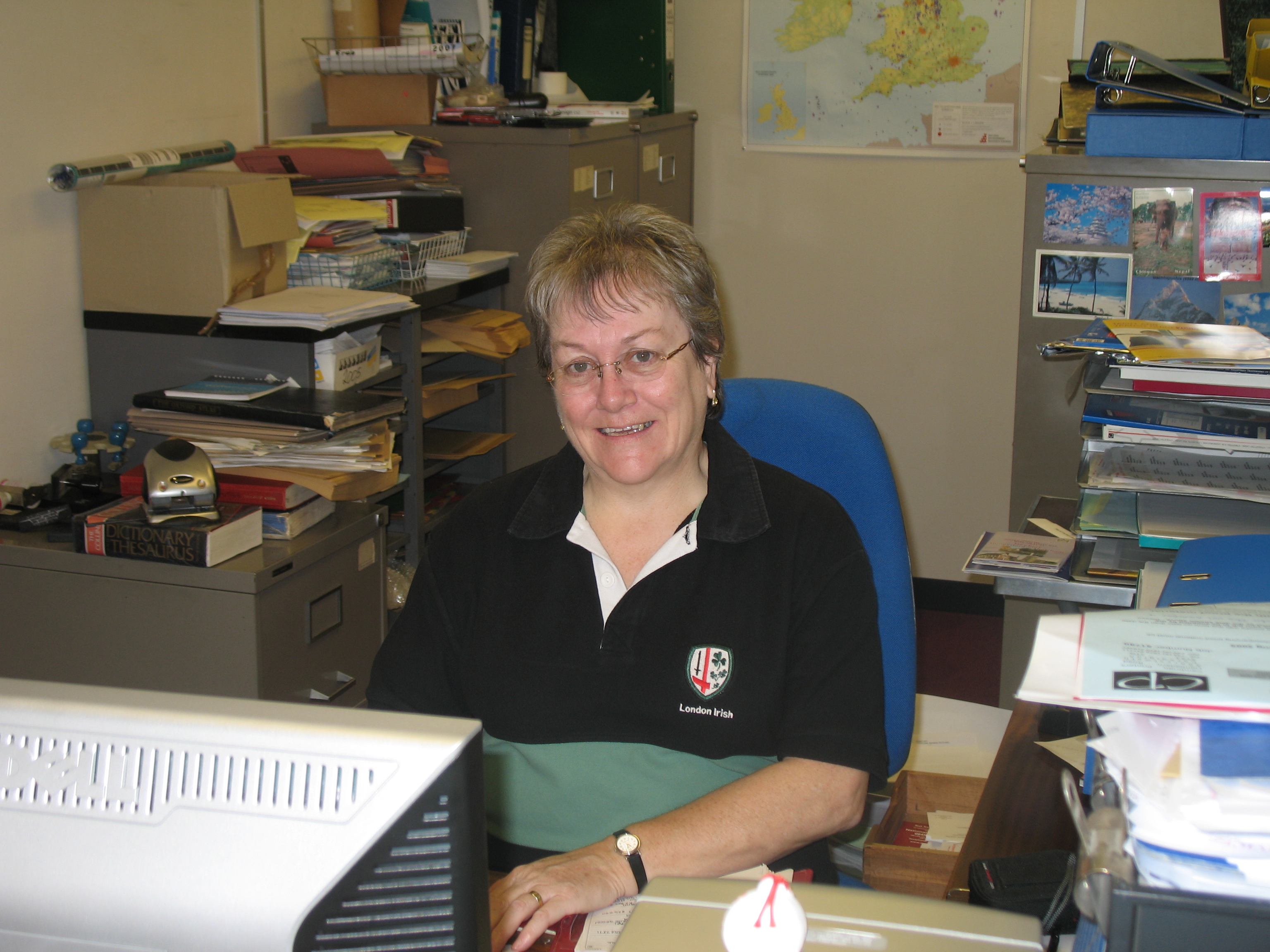 |
Introduction
Having succeeded in sending my three children to school I embarked on a search for a career. I had qualifications in Business Studies and reinforced those by taking AAT (Association of Accounting Technicians) qualifications at the Abingdon Technical College where I had my first experience of forming connections with people from overseas, in this case, a group of students from the island of Tonga.
I applied for the position of Finance Officer at the International Seismological Centre and was pleased to be invited for an interview by Anthony A Hughes and David McGregor. Having worked for a few commercial companies the not-for-profit academic and scientific sphere greatly appealed to me. I was very pleased to be offered the post and I started in September 1986.
I discovered that the ‘Finance Officer’ at Reading University, who supervised our salary payments, was a high-ranking position and I felt a bit of a fraud calling myself, the chief coffee maker, by the same name, so without a formal decision I gradually changed my title to Administration Officer instead, a much better description of my work. The following are the duties of an Administration Officer in order of their importance.
Coffee Maker
I was tasked with this important operation twice a day. I thought nothing of it, it gave me a chance to chat to all the staff. I not only made a pot of coffee but I served it to the staff too. I was not given a uniform even though that would have been handy when washing the cups. This all came to an end with the arrival of the egalitarian Director from the USA. I think he objected to me dictating what time he took his coffee so I was dismissed from my position, coincidentally just after I had accidentally broken his favourite mug. It was self-service from then on and a broad selection of exotic teas and coffees appeared in the ISC kitchen.
Van Driver
|
In 1986 the ISC was renting rooms in Clarendon House, London Road, Newbury, a listed building built around 1759. The offices were created in a hotch-potch of unsuitable rooms but a positive financial situation had encouraged the move to a more modern building of our own. A large collection of ISC publications and historic documents were kept in a storage facility nearby and the intention was to look after them in the new building too. A plot of land was purchased and, on my arrival, our new home was currently under construction in nearby Thatcham, close to the railway station. The staff, computers and books were all housed under one roof by ~1987. The building was once attacked by a lorry belonging to a neighbour on the estate. The unattended vehicle rolled through our car park and crunched into the wall of the Centre beside the front door. It left a long crack in the brickwork but luckily failed to hit any people or cars. During this period the ISC employed a driver/warehouse man who was originally tasked with driving the ISC’s little white van between the storage facility to retrieve books that had been ordered and also to take the data tapes to Chilton Laboratories at Harwell for processing. |
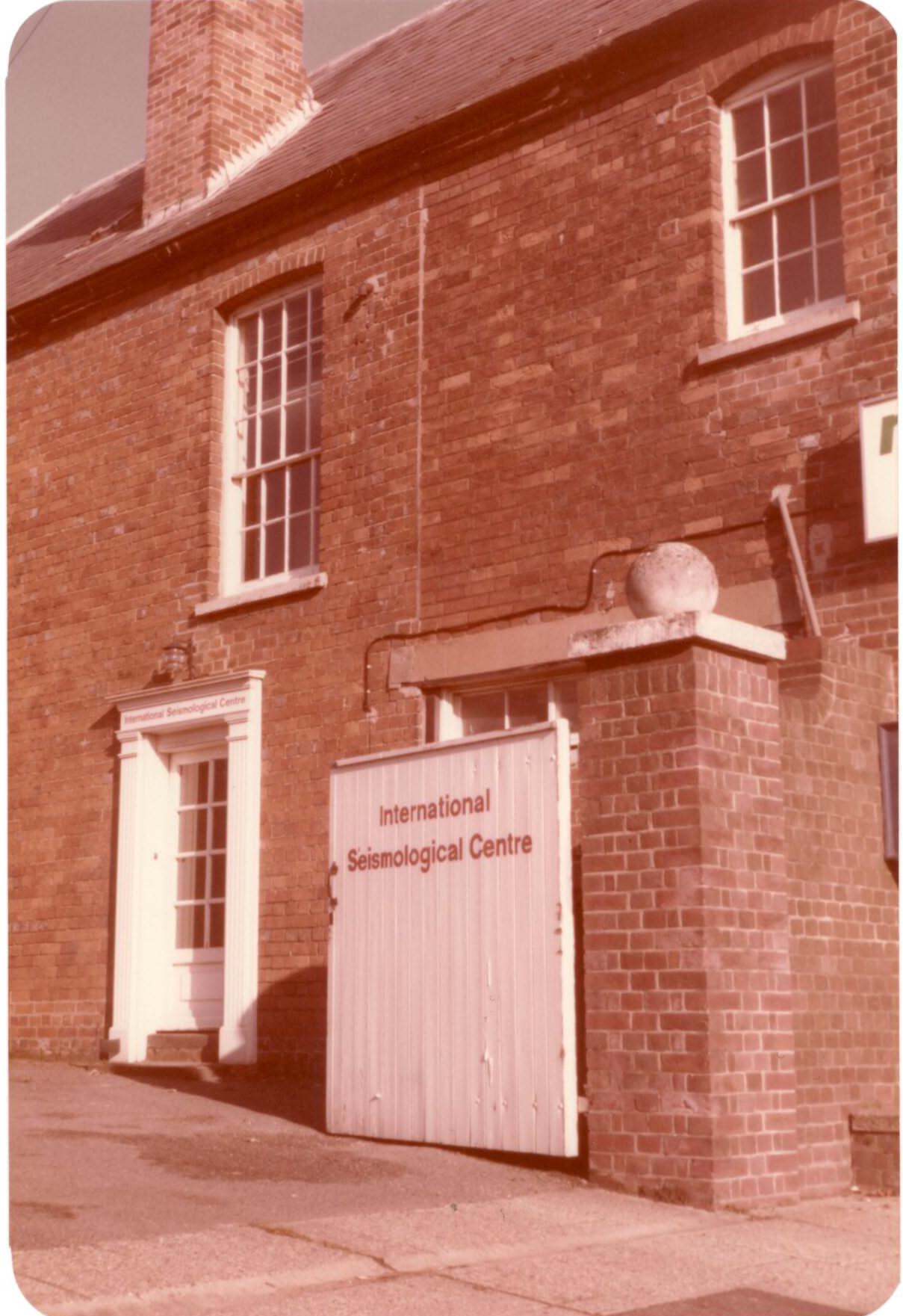 Photo: ISC Building, London Road, Newbury. Photo: ISC Building, London Road, Newbury.
|
The vehicle appeared to have had absolutely no suspension and a grating gear system. Anthony Hughes always liked to support the ‘little man down the road’, protecting their livelihood and in this case, he bought the van from a certain Mr William Morris, who also produced 2.5 million Mini cars at the famous factory in Oxford.
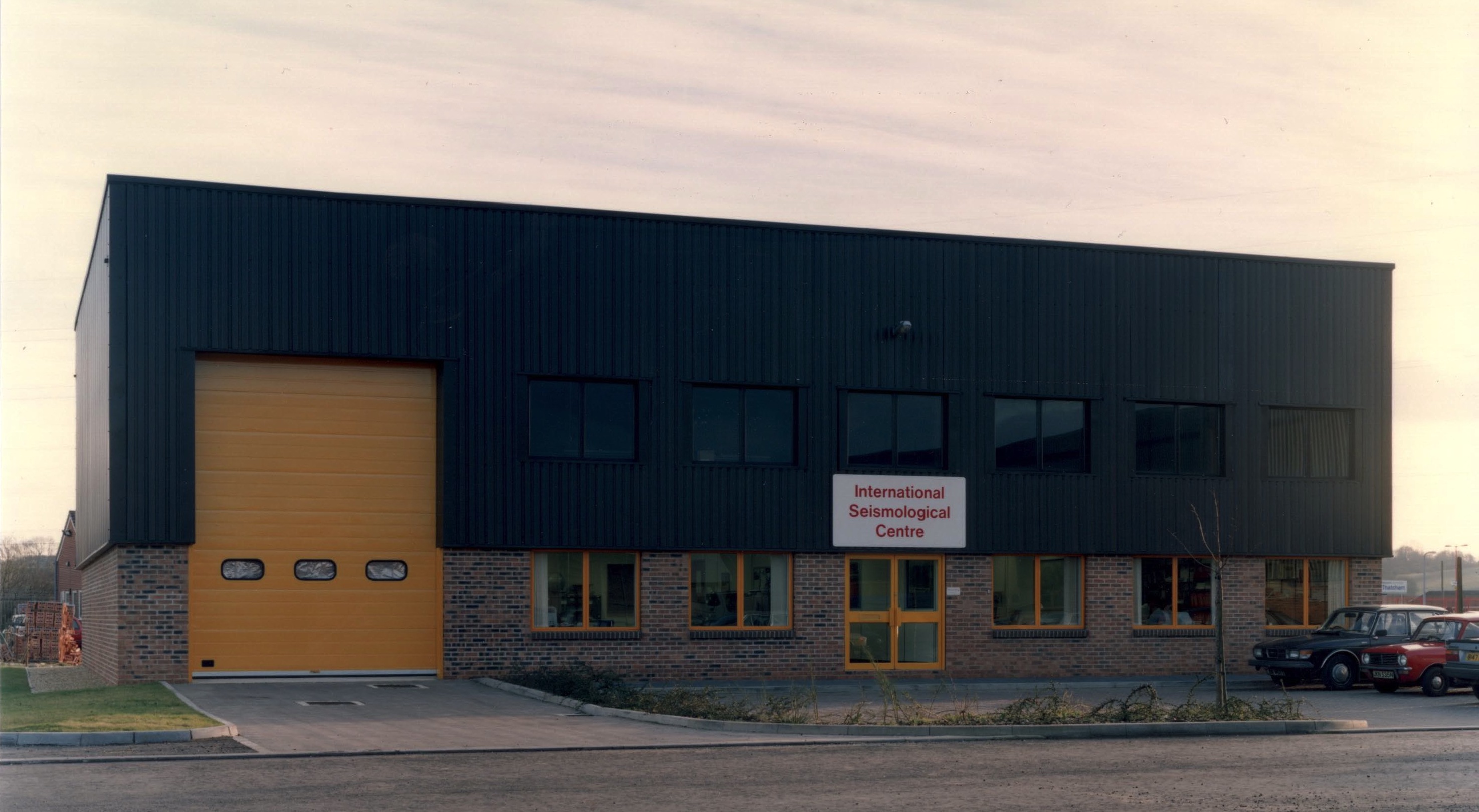 |
|
Once I was ‘lucky’ enough to be asked, along with the Data Preparation Assistant, Carol Tubby, to deliver a quantity of boxes containing the entire back-collection of Bulletins and Catalogues to the University of Bristol. It was a memorable day out, 2 hours each way in a rattly old van travelling on the A4, the original coaching road from London to Bath. Luckily the days of turnpikes, toll roads and highwaymen were long gone, even so the discomfort was an experience never to be repeated!. On the same subject, in the late 1990’s my sister and I visited our brother who was a volunteer for the Voluntary Service Overseas in Kathmandu, Nepal. I managed to pack about 20 issues of the Bulletin that Mr Pandey of the Department of Mines and Geology, Kathmandu had not received. We took a rickshaw to his office and I was relieved of my burden. This personal delivery was much appreciated by Mr Pandey and his staff. I was still using transport with little suspension! Our return to the UK was delayed due to a lightning strike on the control tower at the airport and I was able to email my best ever excuse for not coming to work "I'm sorry, but I'm stuck in Kathmandu!". |
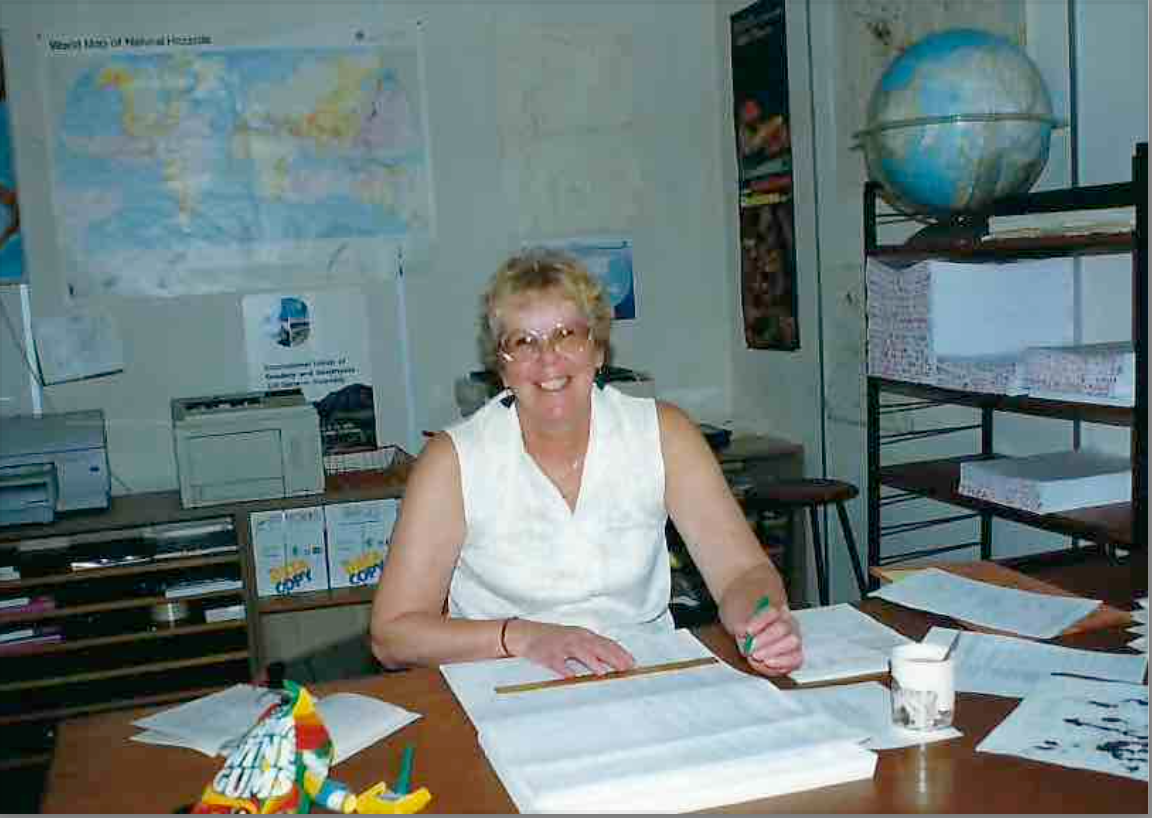 Photo: Carol Tubby (taken 15 June 1999). Photo: Carol Tubby (taken 15 June 1999).
|
The need for the van diminished and our handyman departed and I was given some of his duties. In particular, extricating past Bulletins and Catalogues from the hundreds of boxes in the unheated warehouse. Not an enjoyable job in the winter.
Secretary
I was presented with an electric typewriter on arrival and I administered all the correspondence, complete with carbon copies. I was also given a neat adding machine which had a paper tally roll whirring out of it. I inherited the daily trips to the Post Office with the outgoing mail. For a period I also packed, added postage and delivered to the Post Office 60 or 70 copies of the printed Bulletin whenever they were back from the printers in Thailand. The introduction of CD-ROMs greatly reduced the weight of the postal despath.
Occasionally, being the keeper of the only typewriter, I was also asked to produce extra-curricular documents. A bibliographic list of publications covering several pages must have been the most exasperating piece of work with masses of punctuation marks. A task much easier to do today on a PC. I also typed up occasional records of a campanology group and a local PTA but these were simple in comparison.
After a few years I was given a computer, and the enormous typewriter retired to the warehouse. I was now able to manage our address lists of Members and Subscribers and eventually automatically produce invoices and letters. Gone were the days when I quietly sang the song that named all 50 US states when I typed their addresses. (“What did Delaware boy?...She wore a brand New Jersey!” A classic in its day [1959] sung by Perry Como.)
Whilst on the subject of the USA, every four years the ISC puts together a proposal to the National Science Foundation of USA for a grant to maintain the services of the ISC. To the Directors of the Centre this was a daunting task as the monetary value was so important. Actually, it wasn’t always such a chore for the Director, I remember, in my early days at the ISC, all the NSF required was a copy of the Director’s Report and a letter explaining how important the grant was. I believe this stemmed from the days when the seismological community was small and they appreciated ISC’s data gathering and publishing service. Things got a lot more bureaucratic over the years and often involved several weeks work. Latterly I was designated as the digital-form-filler and I wrestled my way through American English. The outcomes of these proposals quite often depended on world events and US Government policies towards the scientific community, it was often a nervous wait.
Accountant
Initially I maintained the ISC accounts by hand in an enormous ledger. Straightforward bookkeeping which was annually inspected by our auditors who then took the information and produced the annual accounts to be presented to the Governing Council of the ISC comprising all the national Members representatives.
The annual Director’s Report sent to the Members was a time-consuming project on the part of the Director and myself but has also been made somewhat simpler by producing it digitally.
Personnel Manager
I was a one-woman Personnel Department, maintaining staff records and a somewhat creative holiday allotment list, ensuring pay rises when due and learning about tax codes to be able to explain to the newer staff that their salary would be shared with Her Majesty through her Customs & Excise department.
Looking After Visiting Seismologists
The ISC has always employed visiting seismologists from all parts of the world mostly for a period of two years. Mawuli Akoto was about to return to Ghana and he was replaced by Luis Alvear from Chile who arrived with his wife, two children and his mother-in-law. After David McGregor retired it eventually fell to me to help these employees find accommodation. A duty I always enjoyed.
The idea of inviting the seismologists from overseas was for them to learn what the ISC did with their data in the global context and to return to their observatories fully updated on what the ISC needed from them. It was also to maintain the multi-national composition of the Centre. A period of working at the ISC was considered a useful experience.
Trinidad, Romania, New Zealand, Germany, Canada, Algeria, China, the Philippines, Madagascar, Turkey, Poland, Spain, Colombia, USA, Russia, Lithuania, Mexico, Iran, Croatia and Hungary are just a few of the nations represented by seismologists and other employees. In fact, one of the exciting things about working with these ‘aliens’ was visiting them after they had returned home. A wonderful holiday in Trinidad to see Joan Latchman was memorable and a trip to Canada to visit Alison Bird was also very special.
I use the word ‘alien’ advisedly because that was the term used by the British Government with regard to issuing work visas for people from overseas. At the time Britain was a member of the EU and Europeans were permitted to work in this country without a visa.
I became quite skilled in applying for visas, gathering together all the prospective employee’s information which was quite comprehensive but stopped short of hat size and waist measurement! I had to convince the Immigration Department why we wanted to employ an ‘alien’. It was written in our statutes to maintain an international character to the Centre because the support is global and also there were very few British applicants at the time with most coming from seismically active countries. I am proud to say that every one of my applications was successful. A good result considering 2 of them were Directors. I believe the process became even more difficult after Brexit.
Reading University
The Centre was affiliated to the University of Reading. Such an affiliation was necessary to channel the grant from the U S National Science Foundation. Reading University provided the services of Mr J Mulholland from its finance department, to act as the Centre’s Honorary Finance Officer, and the department also handled the Centre’s salary payments. In return the Centre was asked to provide a Research Fellow for the University’s Geology Department. Dr Robin Adams from New Zealand, the Senior Seismologist at the ISC, was chosen. My part in this arrangement was to apprise the Salaries Department of new staff, changes to rates of pay and also to check their calculations.
The relationship continued until the NSF agreed that the ISC could accept the annual grant without having the connection to the University. The Director decided that the salary services should be organised by our auditors, Griffins in Newbury. That continued until I retired and in order to remain popular, I always made sure that everyone was paid the right amount.
Royal Society
The Royal Society was created in the 17th Century and is the UK’s national science academy with a Fellowship of some 1,600 of the world’s most eminent scientists.
The Society was integral to the creation of the ISC, and its former guises. It makes a substantial annual grant to the Centre and for many years we benefitted from the services of Mr Chris Argent, a secretary at the Society, and also the Honorary Secretary to the ISC Executive Committee. He conducted the correspondence with the ISC national Member’s representatives. He also despatched letters inviting new Members to join. He knew several personally having met them at various Executive and Governing Council meetings around the world where he took the minutes.
This job fell to me subsequently and I was delighted to attend meetings in Perugia, Italy; Prague, Czech Republic and Melbourne, Australia
Professor John Woodhouse, Oxford University, Fellow of the Royal Society, lobbied on our behalf and represented the Society at the meetings of the ISC Executive and Governing Council.
The Royal Society grant was sent by way of a cheque from Coutt’s Bank which always made me smile when I deposited it in our bank. Coutt’s Bank is over 300 years old and amongst their account holders is HRH Queen Elizabeth II.
The need for cheque payments diminished and now most payments are made directly by bank transfer.
Directors
|
I was initially employed by Mr ANTHONY A HUGHES who was a considerate man aware of his employee’s abilities and such is the character of the Centre, he paid special attention to our seismologist from New Zealand by taking him to the Varsity rugby matches between Oxford and Cambridge universities. He encouraged all the staff to show the visiting folk our country. Trips to the theatre, sporting events and sightseeing were all on my schedule. During his time global financial crises nearly saw the end of the Centre but it survived with his careful management. |
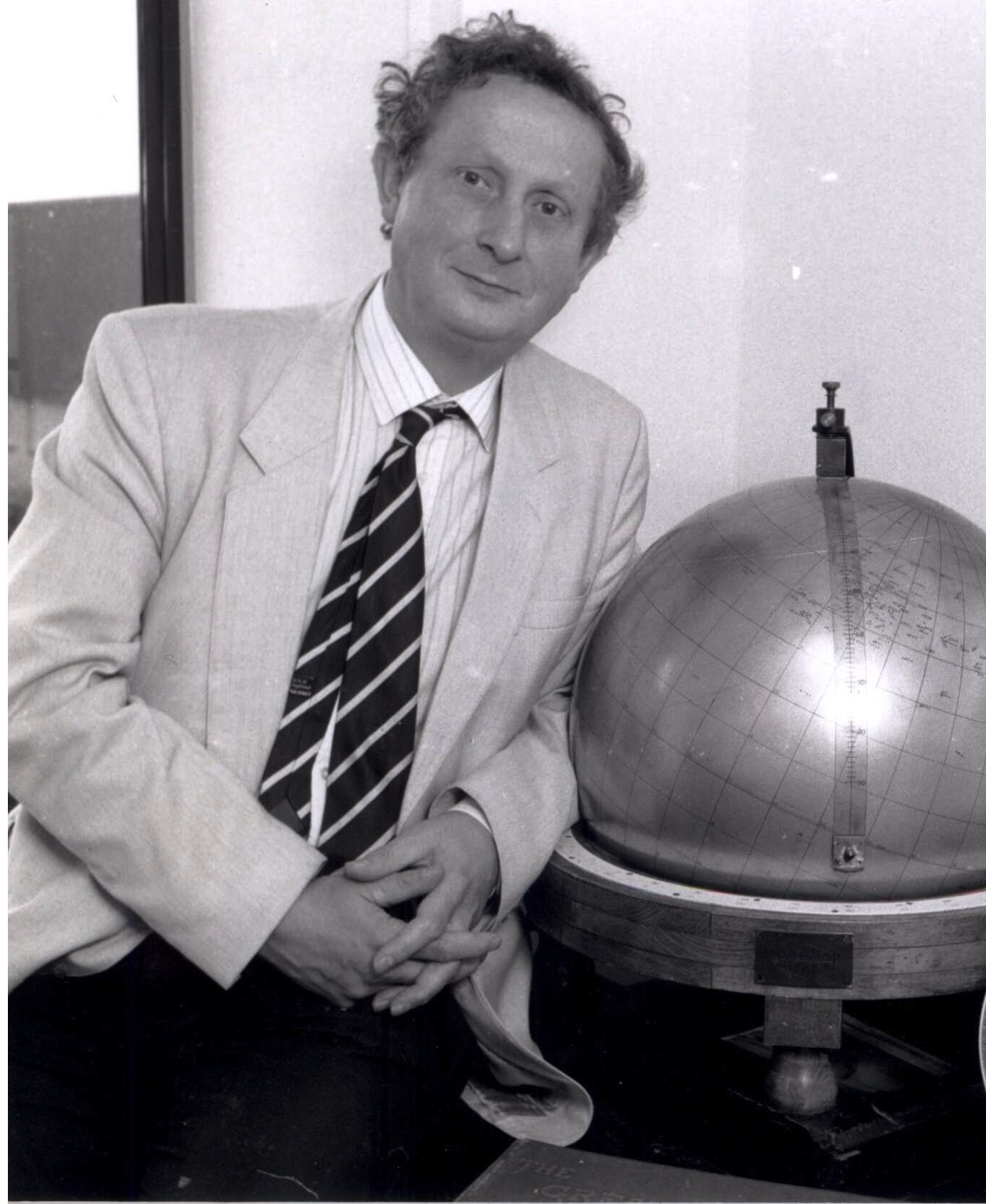 Photo: Dr. Anthony A. Hughes (photo taken in the mid-1980's). Photo: Dr. Anthony A. Hughes (photo taken in the mid-1980's).
|
|
My next Director was Dr RAYMOND J WILLEMANN who we interviewed by the equivalent of Zoom at the time. We joked afterwards that while we were in a special studio he looked as if he was on some kind of space-station, all static and interference! He swept in fully intending to drag the Centre into the 21st century by modernising the computing system and generally streamlining processes to make us more efficient and useful to the seismological community. He brought with him an American attitude to work, often working long hours and through national holidays. He arrived with his leg in plaster from a cycling accident but it didn’t hinder his settling in. I would say he achieved his aims during the six years he was in the UK. He was always kind to me, all 6ft 6inches of him kneeling by my desk learning about the Royal Society and our relationship with NSF. He even taught himself the English accounting system. My husband and I took him to a rugby match and in summer, a cricket match, where we spent the entire afternoon answering his questions and then he put forward ideas on how we could improve the game! Apart from sacking me as coffee maker he opened up my duties at the Centre and I enjoyed many new responsibilities. Bearing in mind that his only experience of life in England was drawn from the TV show ‘Monty Python’s Flying Circus’, a wacky comedy show, I think he was relieved to find we had normal lives. Once or twice I had to stop him from using casual slang in reports, remember you are in England now Sir! |
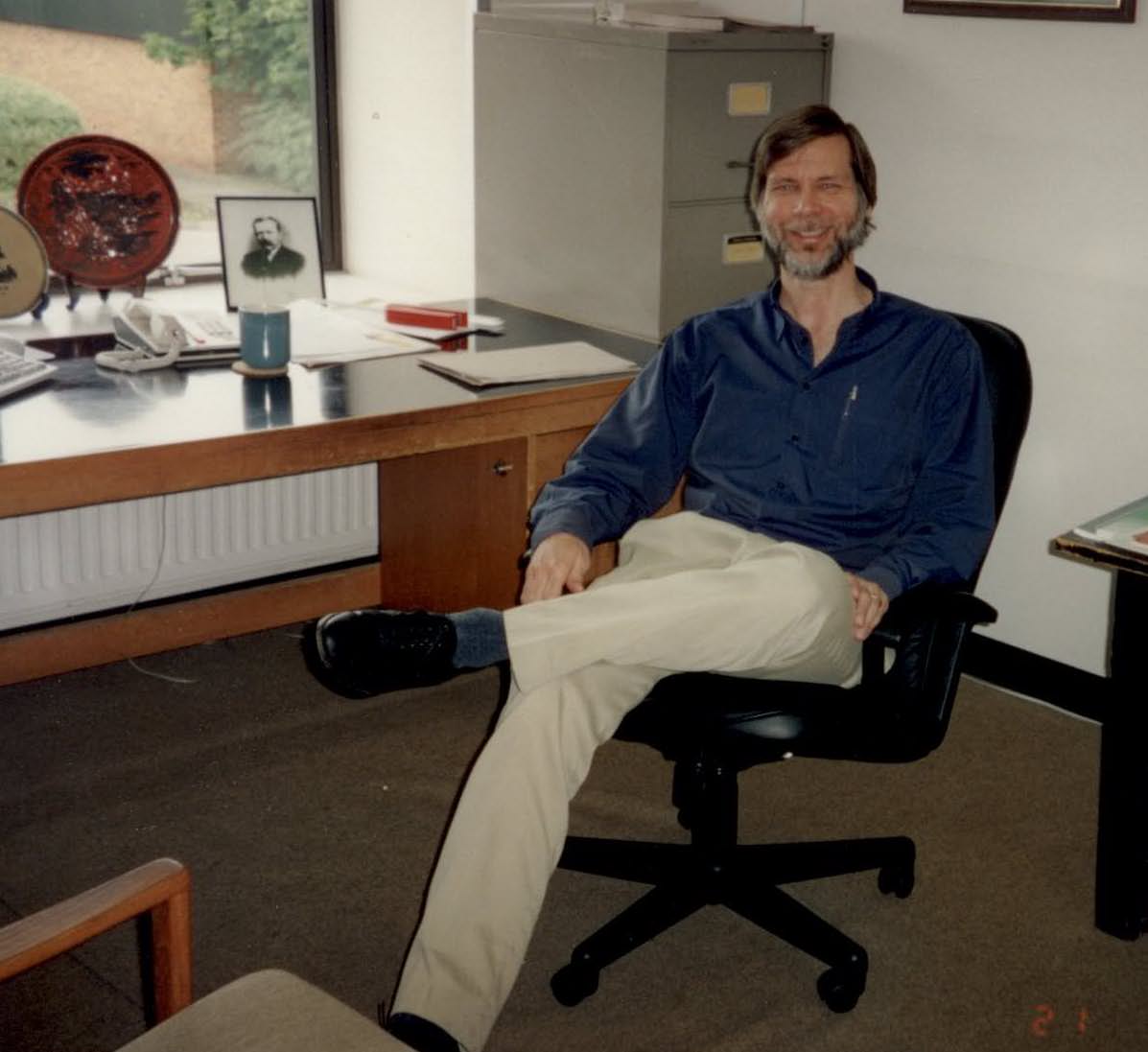 Photo: Dr. Raymond J. Willemann (taken 21 May 1999). Photo: Dr. Raymond J. Willemann (taken 21 May 1999).
|
|
Next on the scene was Dr AVI SHAPIRA from Israel. In his first address to the staff, he said he knew nothing about computers. We were all shocked after what had gone on in the last six years but he was a generous and amiable man who endeavoured to raise more funds from additional members. I took on even more administrative work in an effort to support him. He was very good at delegating. During his 4-year tenure the ISC staff improved the website, a process begun by Ray Willemann. The website improvement was done with extra funds from the Royal Society. Avi also presided over the project that saw ISC computer systems moved from UNIX to Linux which brought large financial savings. |
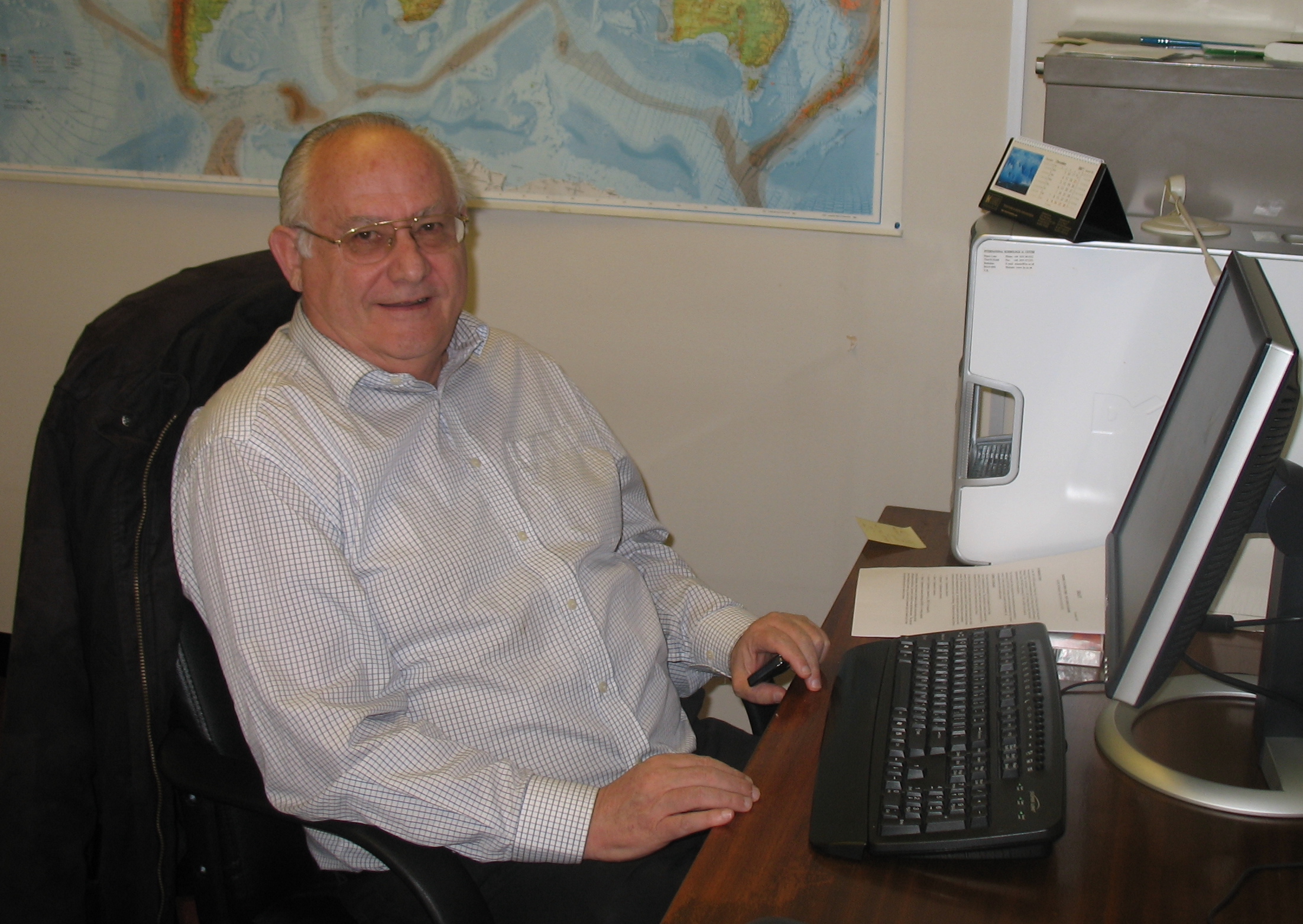 Photo: Dr. Avi Shapira (taken 7 December 2007). Photo: Dr. Avi Shapira (taken 7 December 2007).
|
|
Dr DMITRY STORCHAK from Russia, became my final Director. I remember at the IUGG Assembly in Perugia, Italy 2007 when the Executive Committee confirmed Dmitry’s appointment as the new Director, my husband and I helped him celebrate in a street café in the old part of the city. Dmitry was well-known to us having worked at the ISC for several years. It came as a surprise to me that Dmitry had made many plans on how the ISC should move forward and with his inside knowledge he has successfully introduced them. The number of staff doubled, scientific representation at meetings around the world greatly increased and the number of scientific papers written by ISC staff never lessened. |
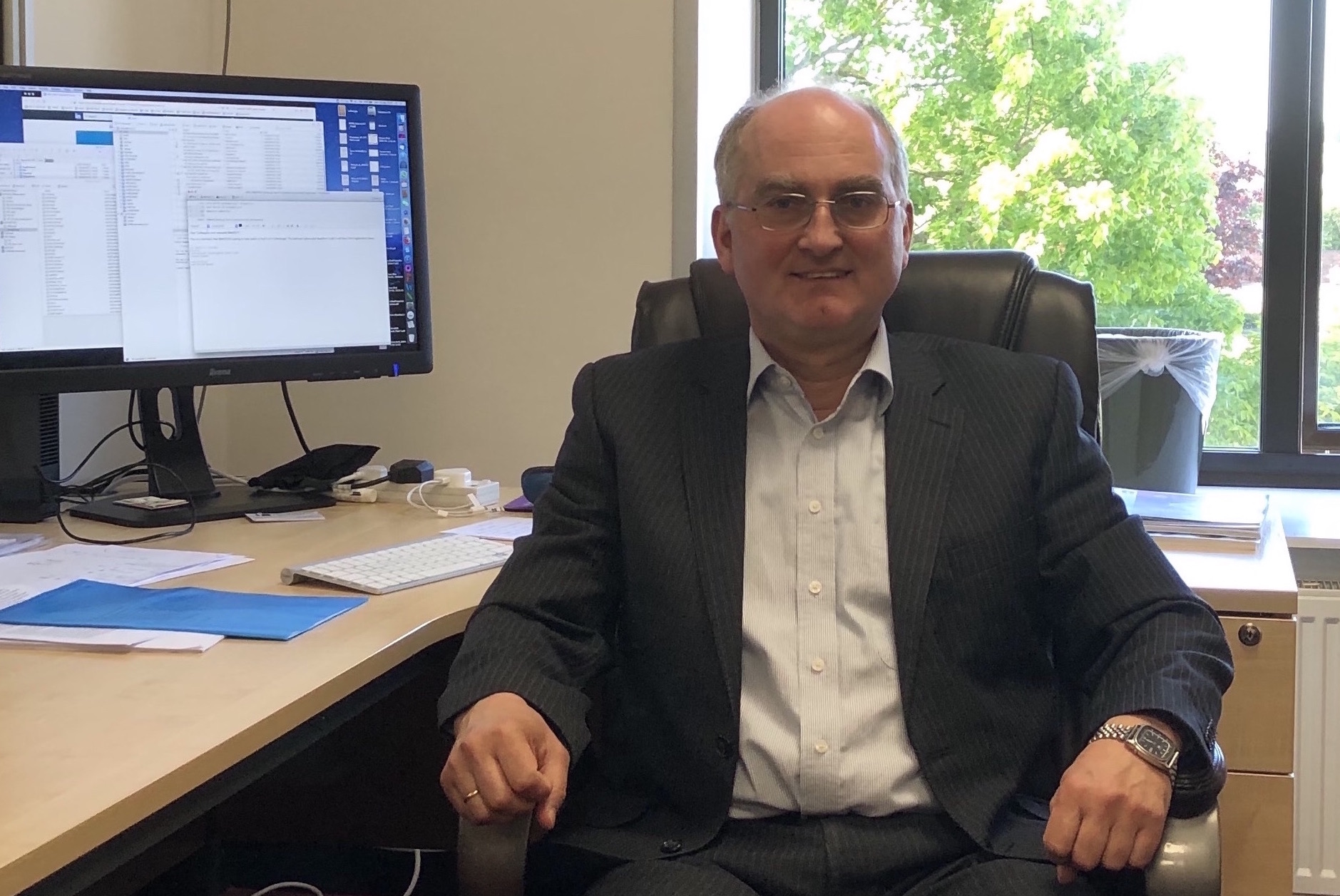 Photo: Dr. Dmitry A. Storchak (taken 13 May 2019). Photo: Dr. Dmitry A. Storchak (taken 13 May 2019).
|
A Mother Figure
As I got older and new staff were younger, I became more of a mother figure. They turned to me to help them with problems both inside and outside of work. Dear friendships developed and I am still in contact with several former colleagues all around the world, even though I have retired. Dmitry and Lynn, my replacement, organised a marvellous retirement party which took place in the Royal Box at Newbury Racecourse. A presentation was made with video contributions from all over the world wishing me well. (My favourite was the submission from John Adams, Canada because he was dressed as a lumberjack complete with axe!!) Former employees attended, travelling from Germany, Czech Republic, Poland, and Wales. I know everyone enjoyed the evening as much as I did.
I consider myself honoured to have worked at the International Seismological Centre and thank them for improving my geography on land and even in the ocean, for introducing me to so many different nationalities and for advancing my knowledge of the digital world from zero to zooming.
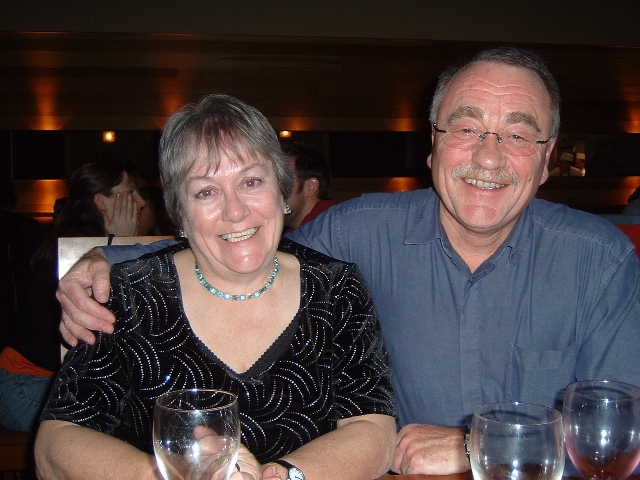
Photo: Maureen & her husband, John (taken 19 December 2005) |
Other stories on the ISC history

